Share this
Podcast: microsampling in proteomics, precision medicine
by Neoteryx Microsampling on Jan 22, 2024 9:00:00 AM
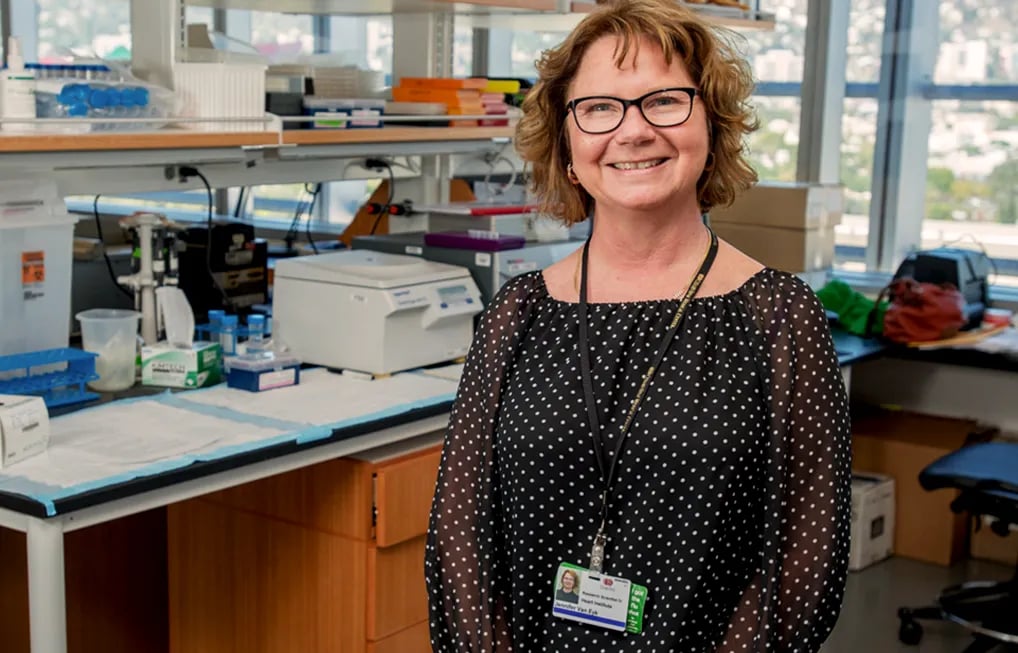
For this episode of the Microsamplify Podcast we spoke with Jennifer Van Eyk, PhD, a Professor of Medicine at Cedars-Sinai Medical Center, who directs the Advanced Clinical Biosystems Research Institute, the Precision Biomarker Laboratory, and Basic Research Science in the Barbra Streisand Women's Heart Center. She also co-directs Cedars-Sinai Precision Health. Dr. Van Eyk’s research is focused on high throughput quantitative proteomics and disease-induced biomarker studies. The Van Eyk Laboratory at Cedars-Sinai is interested in the molecular basis behind a range of cardiovascular disorders.
Neoteryx: Hello Dr. Van Eyk, and welcome to the Microsamplify Podcast from Neoteryx. Thanks for taking the time to speak with us about your work at the Cedars-Sinai Medical Center in Los Angeles.
Dr. Van Eyk: Thank you very much, it's my pleasure to be here.
Neoteryx: I know that proteomics is the general focus of your work, and that you aim to use laboratory methods that are translatable to the medical arena, but can you tell us a little more about yourself, and give us an overview of how you explore or apply proteomics in your research at Cedars-Sinai?
Dr. Van Eyk: Sure. I am very fortunate to direct the Research Biosystems Institute and now the new precision biomarker labs that really emerged from the academic side of our work, which is under the umbrella of the Advanced Clinical Biosystems.
The labs at Cedars-Sinai have been set up to explore proteomics and are focused on the ability to quantify all their forms, both at the small-scale and large-scale —so really being able to scale up to do large numbers. You may say, "Why proteins? And why do you get so excited about proteins?" (Which I really do!)
So, proteins are really the fundamental unit of life. They are the fundamental units of cells, and they have changes both in the short- and long-term, which makes them incredibly fascinating. The changes that occur in the short- and long-term can just be concentration, but they also have these massive post-to-post translation modifications, or changes that really regulate them in this dynamic over time and space.
And why are proteins so important to study in the context of medicine? It's really proteins which drugs affect directly, but they can also give us biomarkers, so we use them. So proteins are really very important in the concept of medicine, because they help us develop biomarkers, and we'll talk about that a bit more.
They help us to understand mechanisms — what's going on —so we can develop drugs. And, we can certainly use them to look at these fast responses to drug therapy or any intervention. And so, to me, if you believe that our goal is to give physicians more tools to help them fight disease, then proteins are where we should be [focused], and monitoring them over time.
Neoteryx: Speaking of proteins, on your Van Eyk Lab website it states, “We apply our mass spectrometry-based expertise to deciphering the precise role that protein expression profiles and modifications play in disease progression.” Can you explain how this plays out in some of your current research projects?
Dr. Van Eyk: Sure, and later I'll talk about some very specific projects that I think illustrate our fundamental philosophy. As I mentioned, it's really this complexity of the proteome of the proteins that really reflect the complexity of biology. Since biology is really what health and disease is about, it's the complexity of the proteome that really captures this.
So, the tools we use, which include mass spectrometry, are based on capturing this complexity and to quantify it. And, by doing that, we hope to develop really detailed mapping of your status, of an individual's status—be that circulating biomarkers in the blood, which we can take and analyze in the hospital, or from home.
Or [we can look inside your cells], and direct drugs to them. So being able to understand you as an individual is really important. The main tool we use is mass spectrometry, which is really a cool technology.
Essentially, what it does, is it weighs the weight of different proteins, and that weight is unique to that protein and unique to the forms that it has, whether it is more modified or not modified. That allows us to move into this world of precision medicine, and to precision monitoring of your status.
One of the big pushes we have in the area of biomarkers currently is that, if you come into the clinic and you are having heart problems with chest pain, they will take a tube of blood and look for the circulating protein in your blood, called "cardiac troponin I" or "cardiac troponin T." It's name doesn't matter, but why it's such a good biomarker is that it is specific for your heart. So if it's circulating in your blood, it's not in your heart where it is supposed to be. That is an indication that your heart muscle is injured and has released this protein into your bloodstream.
That is [an example of] monitoring one protein for one disease. Most diseases aren't so clear cut. Most diseases are more complicated. Diabetes is more complicated. Most cardiovascular disease is more complicated, because it can also have diabetes involved. Alzheimer's is more complicated. You as a person are much more complicated.
So, we want to move from having one protein marker to having markers that reflect the whole network — all of you — so that we can understand how you are responding to drugs, and how your body with your disease status would be. We want to move from one protein to having proteins that represent multiple networks. These networks being different aspects of your body, different organs like your heart versus your kidneys. This tool or technology we use, mass spectrometry, is incredibly helpful for that because it has the capacity to measure so many things at one time. It's very good at multiplexing.
So, instead of monitoring one protein at a time, we can monitor two, three, four, five, or thousands. It's this ability to multiplex that really allows mass spectrometry to help both in this discovery mechanism [exploring] what would be the right biomarkers, all the way up to that clinical assay — be it for diagnosis of heart disease, or as a companion diagnostic for therapy.
Should you be taking that drug, or should you be taking a different one? Mass spectrometry can play this great role because of its ability to quantify and characterize proteins on this scale of thousands to just one with great precision and accuracy.
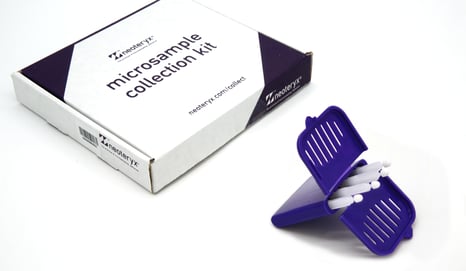 Neoteryx: How do alterations in the proteome affect physiology? And how do you use microsampling with Mitra® devices, based on VAMS® technology, to gather blood samples and remote patient monitoring to measure these effects in study participants and patients at Cedars-Sinai?
Neoteryx: How do alterations in the proteome affect physiology? And how do you use microsampling with Mitra® devices, based on VAMS® technology, to gather blood samples and remote patient monitoring to measure these effects in study participants and patients at Cedars-Sinai?
Dr. Van Eyk: What a great question! With respect to biomarkers, we feel very strongly that longitudinal samples, meaning samples taken from someone over time, while they are developing the disease or monitoring it. [Perhaps] they have received a drug or had surgery and we want to know how they are responding.
This is best done over time. You can serve as your own control. Your proteins may go up when you are sick. If you have something called the acute phase response, that will elevate when you are sick. Other proteins will decrease when you are sick. Seeing that dynamic change really helps you to understand what's going on.
Currently, most of that is done single time-point. We want to move from that to be able to understand things like your drug response, and whether or not you need to have another intervention. We can take it one step further, and that is to be able to use these remote blood sampling devices. Because if you say you need to have more time-points, then you really only have a few options.
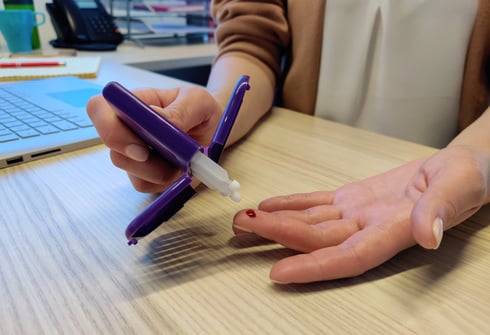 Someone has to come in and get a blood draw at a lab like Quest or LabCorp, or go see their physician, or you need to be able to move to a scenario where someone can take their own blood sample and transport it easily.
Someone has to come in and get a blood draw at a lab like Quest or LabCorp, or go see their physician, or you need to be able to move to a scenario where someone can take their own blood sample and transport it easily.
The Mitra devices do that very well, because it's a dried blood sample. You can stick it in the mail in its foil package.
Once it comes to us, we can analyze it using mass spectrometry in our lab and provide you with clinical-grade results on these biomarkers that exist, or on new biomarkers that we're developing (not just in our lab, but in other labs around the world.) The remote sampling devices are really helpful, because they open up the ability for anyone to take their own blood sample anytime and anyplace.
This has really big implications, and not just in the hospital system. Certainly, we have seen with COVID-19 the move towards telehealth, where you call your physician to talk to them, as opposed to coming in to see them in their office. Imagine a scenario where you could collect your own blood sample and have it analyzed, so that when you do talk to your physician you have the clinical chemistry data you need for that physician to make a diagnosis.
You can also see where, for individuals coming to our hospital it is not possible or is very challenging because of their location or their circumstance. Now they will have the opportunity to have access to clinical chemistry data with ease. That's in the medical system. We haven't even talked about how we can use [remote sampling devices] to expand our knowledge. It's incredibly hard to do what we call "natural history of diseases." What's the natural progression of a disease?
For those you have to take samples over time, and usually from quite a few people to understand the natural progression of a disease. This is very hard to do on the research side, but obviously, very fundamental.
/2022%20Mitra%20Lifestyle%20Images%20(approved)/mailing-no-cold-chain.jpeg?width=444&height=259&name=mailing-no-cold-chain.jpeg) How can we do a treatment if we don't understand how a disease naturally progresses? Now we can do this.
How can we do a treatment if we don't understand how a disease naturally progresses? Now we can do this.
You can have individuals take their own blood sample and send it in. We can do it for mid-risk or high-risk individuals where, instead of coming in every month or every few months to see the doctor, maybe we can take blood tests more often and have a finer degree of monitoring these individuals, with reduced cost.
We need to have a cost-benefit analysis of this. There are so many places where you can remove the barrier of having to go somewhere to have a blood sample drawn, both for research understanding on the science side, as well as in medical practice. I think this [remote blood collection and microsampling] opens up so many possibilities.
The way for this to work is that we have to have a really strong foundation of how to handle the samples, how to process them. And then, of course, we have to have really good assays that will help clinical decision making. Both are needed, and certainly the VAMS® technology helps in opening up that door.
Neoteryx: So, if I'm a person taking a medication, and you are wanting samples from me at different time-points in the day — for example, let's say I have a symptom. Would it be helpful for me to use the Mitra to take a sample when I'm having that experience, side effect or symptom to provide you more information?
Dr. Van Eyk: That's a great question and, in theory, one would hope so! That's the assay part. What would we look at? In the discovery mode, when we're looking for biomarkers, we'll monitor hundreds and hundreds of proteins. Ultimately, in the clinic we're [trying to hone in on a smaller number]...finding that and linking it really becomes key.
That's why we built the precision biomarkers, to be able to increase the efficiency to go from a discovery to a clinical assay. Currently, that takes a long time. Our last assays, which were around traumatic brain injury, took a really long time.
We're trying to shorten that development time in the precision biomarker labs. But you are absolutely right, there are so many places where being able to take a sample at the time when there are symptoms [in order] to understand what those symptoms mean becomes very important.
Neoteryx: You recently became co-director of Cedars-Sinai Precision Health, which is focused on personalized health care within the hospital and the continuous assessment of the healthy population at-large. Can you discuss this work and how you maximize throughput and reproducibility in order to move targeted discovery methods into personalized clinical health assessments?
Dr. Van Eyk: Precision Health is this wonderful Cedars-Sinai initiative, which I co-direct with Dr. Dermot McGovern. There is also Ian Wright and Koen Raedschelders, who have [been working with us] to build the infrastructure and community to directly transfer the Omic data into medical practice. We put together a symposium, and we have an internal funding agency that is a competitive grant system. We partner with industry, and Neoteryx is one of the companies we partner with. I'll give you two examples of projects in which we have used VAMS technology.
Both of them really illustrate, I think, where this technology helps precision health to work. The first project example is around adrenal insufficiency. This is a great project we're doing with Dr. Ben Shlomo. She is a physician here at Cedars, and has a great interest in adrenal insufficiency, a syndrome that manifests itself by an insufficiency in a hormone called cortisol. Cortisol is produced by your adrenal glands. It's relatively rare — about three in 10,000 people have it. It's associated with a high degree of mortality and a lack of a good quality of life, if it's not promptly diagnosed and treated with hydroxycortisol.
So essentially, you're replacing the cortisol that your body should be producing. We know very little about [this disease], and we don't have biomarkers. Even the measurement of cortisol is not very accurate and can be very misleading. There is a need to be able to define it, and to figure out how much cortisol they should be taking, and when they should be taking it.
We started a study with them that kind of goes back to what you asked: If you were to take a sample several times a day, would this provide more information? These patients normally get Hydrocortisone twice a day, so we are getting them to take their blood samples several times a day using the Neoteryx Mitra devices, so that we can actually see the diversity of how individuals use their cortisol up. How much should they be taking, and how does it vary over the day? This is important because it is not known.
Then we have another great study where we are following individuals undergoing treatment and taking different doses as they get stabilized over time. This study is really wonderful in that we are able to get these many samplings in a way where a patient can do it from home. The patients are really remarkable and a huge "Thank You" to all of them who are participating in the study, because it is going to provide this time course so we can start to understand: how should we adjust their medication, what is their fluctuation, how are they feeling, and can we stabilize them more?
This is a great study, and the Neoteryx devices are helping us do it. The second project example is one for inflammatory bowel disease (IBD), which is with our co-director or Precision Health, Dr. Dermot McGovern. In this study we are tracking individuals after treatment. We're looking for predictors in response to therapy. If you have IBD (Crohn's, or colitis), you can end up having to go onto an immune-mediated therapy. You want to be able to blunt your immune response and settle down your GI tract. It's really hard to know what happens after we give them say, anti-inflammatories or biological therapy, or another intervention.
We need to know what is their time course, and we need to understand their response to therapy. We need to know whether they will go into disease relapse or whether they will go into remission, and what does that look like? We cannot predict that at this time. We set up this study to follow individuals for six months.
After they get an intervention, they are using the Neoteryx [Mitra] devices every two weeks to try and look at how well someone is doing, or what is their health status after therapy. So, you can see that one project — the adrenal insufficiency study — is more research-based at the beginning, because we need to understand the disease so we can start to look for mechanisms and biomarkers. The other project — the study of patients with IBD following treatment with anti-inflammatory — is really closer to clinic, in that we are looking for a relationship so we can predict disease relapse or remission.
Neoteryx: In your recent HUPO 2020 talk, you mentioned the Center for the Undiagnosed Patient (CUP) at Cedars-Sinai Medical Center as an example of how you apply methods of blood analysis to help diagnose patients with complicated cases. When a diagnosis isn't clear, it is difficult for the medical team to decide how to move forward, but you help by providing insights in these cases, by monitoring each individual over time with remote blood sampling. Can you explain this process a bit more and the types of insights you provide?
Dr. Van Eyk: The Center for the Undiagnosed Patient is something very dear to my heart, because my own daughter had a journey through this very aspect of not being diagnosed, and then we experienced great joy when she was finally diagnosed, and we could move forward. I stand in awe of the physicians that participate in the Center for the Undiagnosed Patient.
There is a group who look at every individual who applies to the center, and then they set it up for individuals to meet about five physicians in different areas that are a team that is unique to each individual.
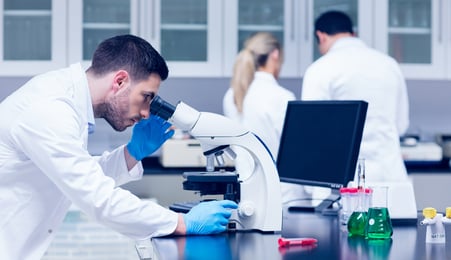 They get assessed, and then all that information comes back to a team of about 20 physicians across many different disciplines.
They get assessed, and then all that information comes back to a team of about 20 physicians across many different disciplines.
Each case is discussed, and this massive team tries to understand what is going on and if new tests need to be done. The Center is open for children and adults. With children, it is often a genetic disease [that is discovered] when they fail to thrive. With adults, it is usually very complicated. They can be slotted into several possibilities.
One is that they have a new syndrome that is extremely rare — a new disease that we didn't know existed, or a new genetic mutation we didn't know. Sometimes is a rare syndrome that has just been missed. There are rare syndromes, like one in 100,000 or more, which can be missed.
More often, these are complicated, multi-disease cases where there are overlapping diseases being expressed and we have to dis-entwine what is going on. Sometimes it is a common disease, but the clinical representation is different because, of course, everyone is different. So, with multi-omics, what we hope to be able to do, is sort out what is going on with the individual. You mentioned something earlier about a symptom that waxes and wanes — Can you take a blood sample at that point and actually figure out what is going on? The answer to that is: Yes, you can!
What is interesting about this is the spectrum of individuals—these are very unique individuals. Sometimes we can't diagnose them, but sometimes we can rule out diseases, which can be just as important as ruling in a new syndrome or complex disease. It's a scary situation when you don't know what's wrong with you, and you start to doubt yourself — and you shouldn't!
That's why I think the Center for the Undiagnosed Patient is very important. And, being able to do these sequential time samples becomes increasingly important, not only for our understanding, but to help in the diagnosis.
Neoteryx: How many patients come through that program? Are we talking about hundreds or thousands? I'm just curious what the patient population is like at any given time.
Dr. Van Eyk: It's still a very new center, so we're only seeing 20 to 30 people per year. We're hoping to get that number up to 50 patients per year. There are other centers for undiagnosed patients around the US, and the National Institutes of Health (NIH), which is a big funding agency from the Federal Government, also has a big center. They are not using proteomics the way we are, but we hope someday they will.
Like I said, the physicians at our Center are remarkable, and I get the pleasure of sitting and listening to them, and I learn so much from this wisdom. Medicine is both wisdom and evidence. In the Center for the Undiagnosed Patient is where you really need that mix of wisdom, and evidence, and the blood sampling, genetics and metabolomics all help to provide more understanding of an individual's health and disease status. In five years, I think we are going to know so much more!
Neoteryx: That's so exciting! Thank you, Dr. Van Eyk, for speaking with us about how you apply microsampling in your work in the CUP and beyond in Cedars-Sinai Medical Center in Los Angeles. We wish you and your many colleagues great success with your projects!
Explore our Microsampling in Omics resource page for additional information:
Resources:
Key Publications by Dr. Van Eyk: https://www.cedars-sinai.edu/research/labs/van-eyk/publications.html
Image Credits: Cedars Sinai, Trajan
Share this
- Microsampling (206)
- Research, Remote Research (119)
- Venipuncture Alternative (105)
- Clinical Trials, Clinical Research (83)
- Mitra® Device (73)
- Therapeutic Drug Monitoring, TDM (51)
- Dried Blood Spot, DBS (39)
- Biomonitoring, Health, Wellness (30)
- Infectious Disease, Vaccines, COVID-19 (24)
- Blood Microsampling, Serology (23)
- Omics, Multi-Omics (21)
- Decentralized Clinical Trial (DCT) (20)
- Specimen Collection (18)
- Toxicology, Doping, Drug/Alcohol Monitoring, PEth (17)
- Skin Microsampling, Microbiopsy (14)
- hemaPEN® Device (13)
- Preclinical Research, Animal Studies (12)
- Pharmaceuticals, Drug Development (9)
- Harpera Device (7)
- Industry News, Microsampling News (5)
- Antibodies, MAbs (3)
- Company Press Release, Product Press Release (3)
- Environmental Toxins, Exposures (1)
- July 2025 (1)
- May 2025 (1)
- April 2025 (2)
- December 2024 (2)
- November 2024 (1)
- October 2024 (3)
- September 2024 (1)
- June 2024 (1)
- May 2024 (1)
- April 2024 (4)
- March 2024 (1)
- February 2024 (2)
- January 2024 (4)
- December 2023 (3)
- November 2023 (3)
- October 2023 (3)
- September 2023 (3)
- July 2023 (3)
- June 2023 (2)
- April 2023 (2)
- March 2023 (2)
- February 2023 (2)
- January 2023 (3)
- December 2022 (2)
- November 2022 (3)
- October 2022 (4)
- September 2022 (3)
- August 2022 (5)
- July 2022 (2)
- June 2022 (2)
- May 2022 (4)
- April 2022 (3)
- March 2022 (3)
- February 2022 (4)
- January 2022 (5)
- December 2021 (3)
- November 2021 (5)
- October 2021 (3)
- September 2021 (3)
- August 2021 (4)
- July 2021 (4)
- June 2021 (4)
- May 2021 (4)
- April 2021 (3)
- March 2021 (5)
- February 2021 (4)
- January 2021 (4)
- December 2020 (3)
- November 2020 (5)
- October 2020 (4)
- September 2020 (3)
- August 2020 (3)
- July 2020 (6)
- June 2020 (4)
- May 2020 (4)
- April 2020 (3)
- March 2020 (6)
- February 2020 (3)
- January 2020 (4)
- December 2019 (5)
- November 2019 (4)
- October 2019 (2)
- September 2019 (4)
- August 2019 (4)
- July 2019 (3)
- June 2019 (7)
- May 2019 (6)
- April 2019 (5)
- March 2019 (6)
- February 2019 (5)
- January 2019 (8)
- December 2018 (3)
- November 2018 (4)
- October 2018 (7)
- September 2018 (6)
- August 2018 (5)
- July 2018 (8)
- June 2018 (6)
- May 2018 (5)
- April 2018 (6)
- March 2018 (4)
- February 2018 (6)
- January 2018 (4)
- December 2017 (2)
- November 2017 (3)
- October 2017 (2)
- September 2017 (4)
- August 2017 (2)
- July 2017 (4)
- June 2017 (5)
- May 2017 (6)
- April 2017 (6)
- March 2017 (5)
- February 2017 (4)
- January 2017 (1)
- July 2016 (3)
- May 2016 (1)
- April 2016 (2)

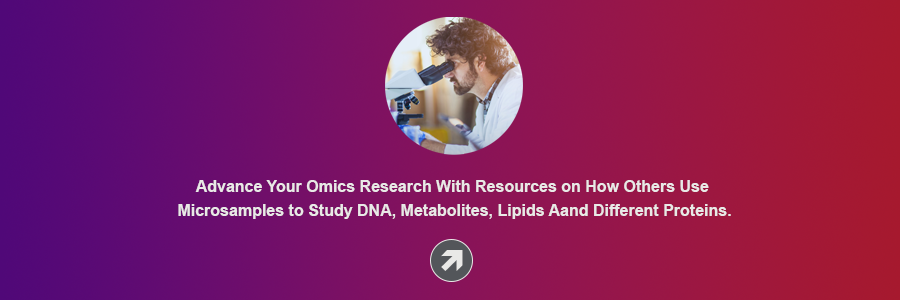

No Comments Yet
Let us know what you think